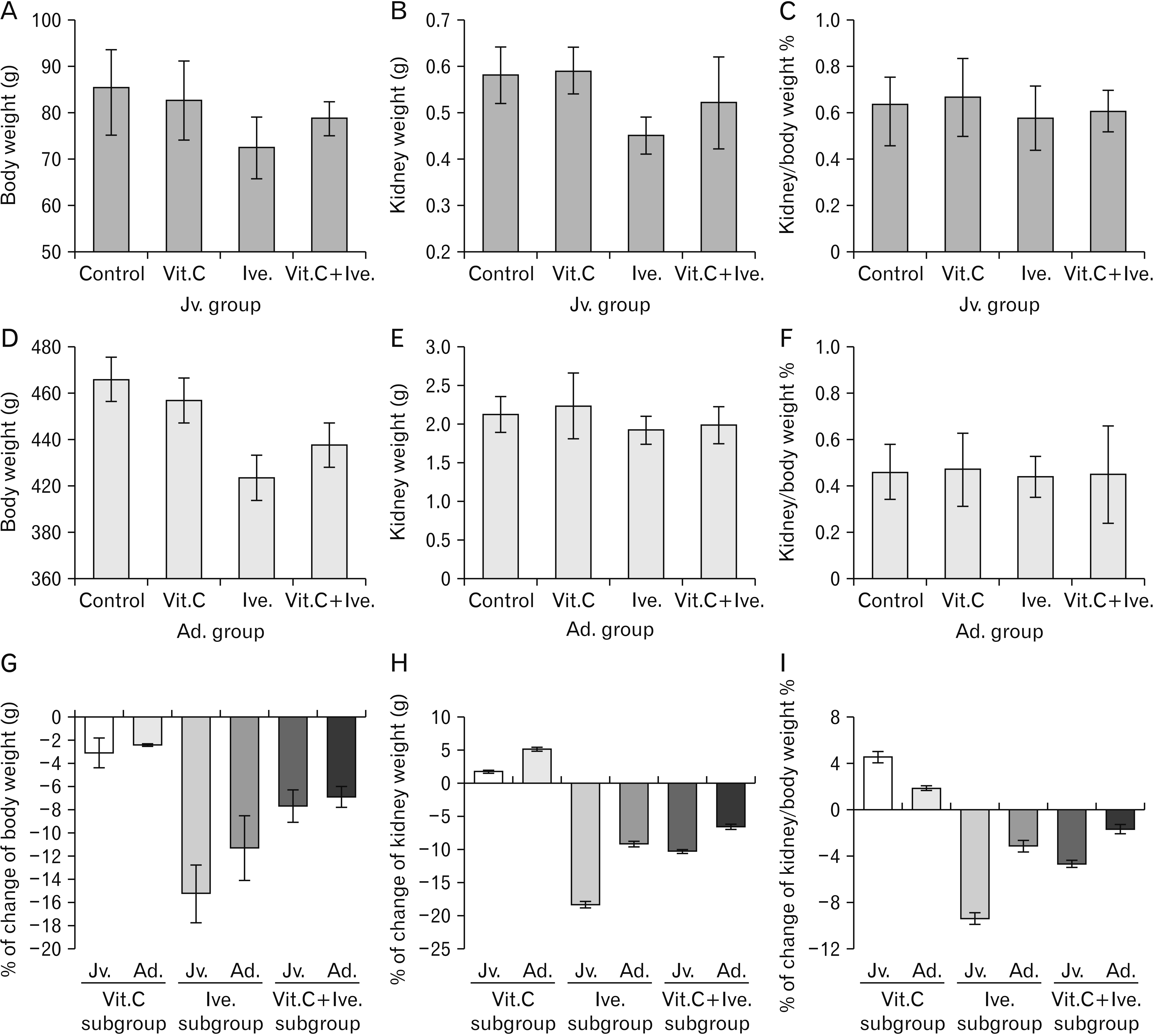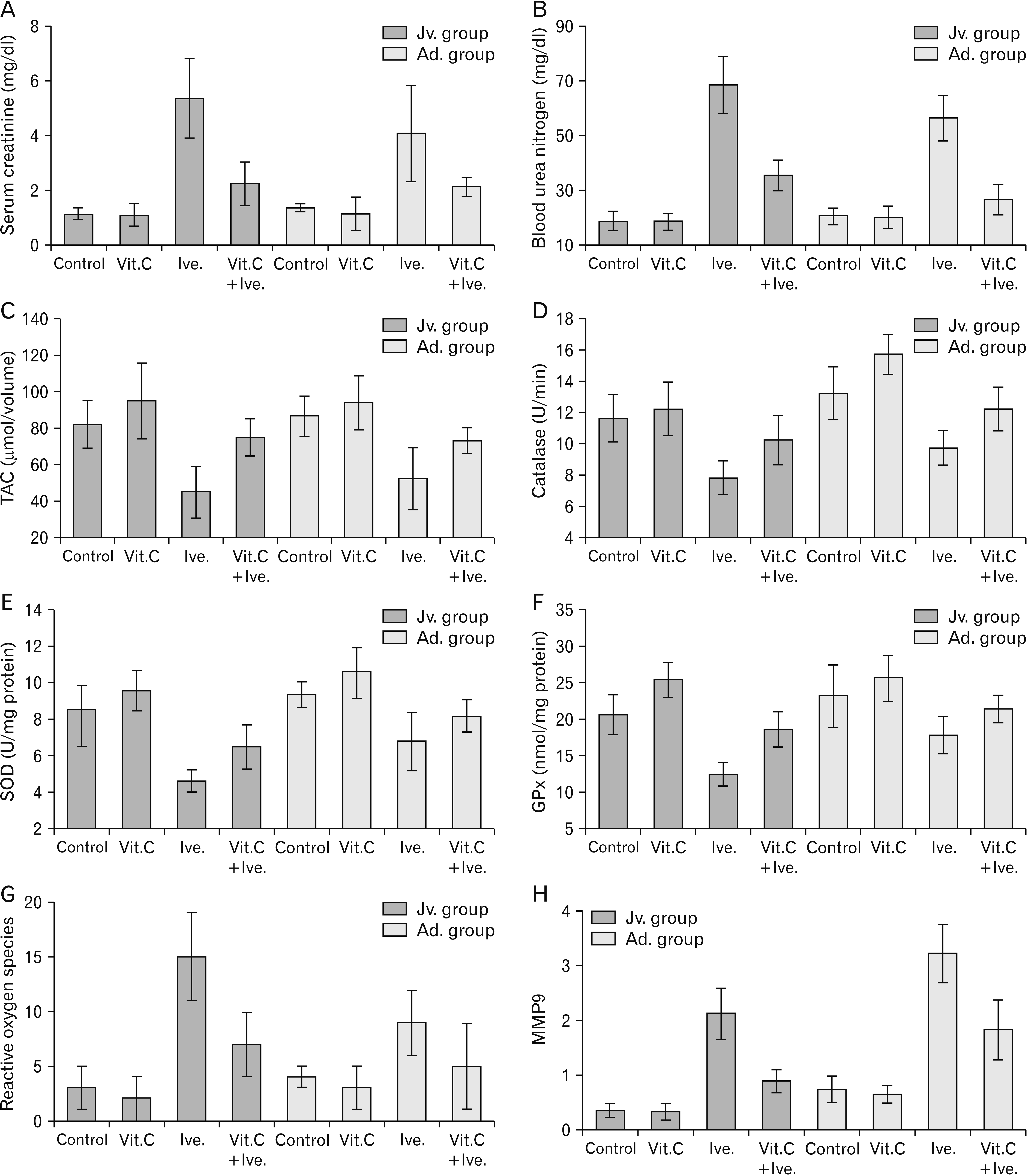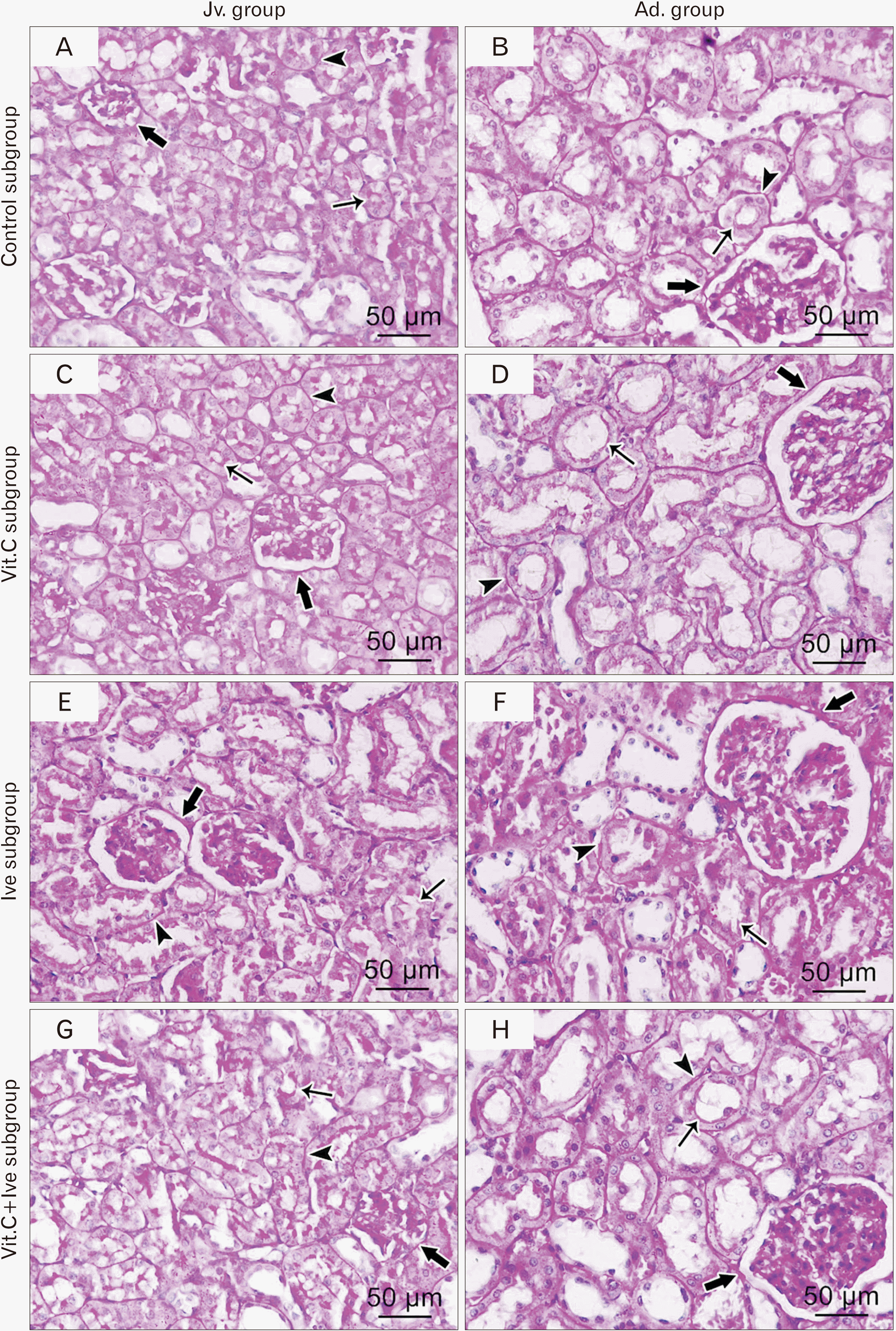1. Jiang F, Deng L, Zhang L, Cai Y, Cheung CW, Xia Z. 2020; Review of the clinical characteristics of coronavirus disease 2019 (COVID-19). J Gen Intern Med. 35:1545–9. DOI:
10.1007/s11606-020-05762-w. PMID:
32133578. PMCID:
PMC7088708.

2. Lu H, Stratton CW, Tang YW. 2020; Outbreak of pneumonia of unknown etiology in Wuhan, China: the mystery and the miracle. J Med Virol. 92:401–2. DOI:
10.1002/jmv.25678. PMID:
31950516. PMCID:
PMC7166628.

3. Sohrabi C, Alsafi Z, O'Neill N, Khan M, Kerwan A, Al-Jabir A, Iosifidis C, Agha R. 2020; World Health Organization declares global emergency: a review of the 2019 novel coronavirus (COVID-19). Int J Surg. 76:71–6. DOI:
10.1016/j.ijsu.2020.02.034. PMID:
32112977. PMCID:
PMC7105032.

4. Reviglio VE, Osaba M, Reviglio V, Chiaradia P, Kuo IC, O'Brien TP. 2020; COVID-19 and Ophthalmology: a new chapter in an old story. Med Hypothesis Discov Innov Ophthalmol. 9:71–3. PMID:
32490013. PMCID:
PMC7134243.
6. Heidary F, Gharebaghi R. 2020; Ivermectin: a systematic review from antiviral effects to COVID-19 complementary regimen. J Antibiot (Tokyo). 73:593–602. DOI:
10.1038/s41429-020-0336-z. PMID:
32533071. PMCID:
PMC7290143.

9. Yang SNY, Atkinson SC, Wang C, Lee A, Bogoyevitch MA, Borg NA, Jans DA. 2020; The broad spectrum antiviral ivermectin targets the host nuclear transport importin α/β1 heterodimer. Antiviral Res. 177:104760. DOI:
10.1016/j.antiviral.2020.104760. PMID:
32135219.

10. Shoumann WM, Hegazy AA, Nafae RM, Ragab MI, Samra SR, Ibrahim DA, AL-Mahrouky TH, Sileem AE. 2021; Use of ivermectin as a potential chemoprophylaxis for COVID-19 in Egypt: a randomized clinical trial. J Clin Diagn Res. 15:OC27–32. DOI:
10.7860/JCDR/2021/46795.14529.
11. Atakisi E, Atakisi O, Topcu B, Uzun M. 2009; Effects of therapeutic dose of ivermectin on plasma nitric oxide and total antioxidant capacity in rabbits. Eur Rev Med Pharmacol Sci. 13:425–9. PMID:
20085123.
12. Saha D. 2014; Role of free radicals, oxidative stress and xenobiotics in carcinogenesis by environmental pollutants. Av Biomed. 3:84–92.
13. Nwani CD, Odo GE, Nwadinigwe AO, Onyeke CC, Atama CI, Ngwu G, Oluah SN, Ukonze JA, Ezeibe BC. 2016; Short-term effects of Albendazole on the oxidative stress markers and hematological parameters in tissues of African Catfish Clarias gariepinus. J Aquat Anim Health. 28:222–8. DOI:
10.1080/08997659.2016.1194908. PMID:
27754768.
14. Budge PJ, Herbert C, Andersen BJ, Weil GJ. 2018; Adverse events following single dose treatment of lymphatic filariasis: observations from a review of the literature. PLoS Negl Trop Dis. 12:e0006454. DOI:
10.1371/journal.pntd.0006454. PMID:
29768412. PMCID:
PMC5973625.

15. Burnham GM. 1993; Adverse reactions to ivermectin treatment for onchocerciasis. Results of a placebo-controlled, double-blind trial in Malawi. Trans R Soc Trop Med Hyg. 87:313–7. DOI:
10.1016/0035-9203(93)90144-F. PMID:
8236405.

16. Lukiana T, Mandina M, Situakibanza NH, Mbula MM, Lepira BF, Odio WT, Kamgno J, Boussinesq M. 2006; A possible case of spontaneous Loa loa encephalopathy associated with a glomerulopathy. Filaria J. 5:6. DOI:
10.1186/1475-2883-5-6. PMID:
16686951. PMCID:
PMC1471781.

17. Kaur U, Chakrabarti SS, Gambhir IS. 2017; Delirium induced by albendazole-ivermectin combination: report of the first case in an older patient. Geriatr Gerontol Int. 17:2618–20. DOI:
10.1111/ggi.13158. PMID:
29265756.

18. Veit O, Beck B, Steuerwald M, Hatz C. 2006; First case of ivermectin-induced severe hepatitis. Trans R Soc Trop Med Hyg. 100:795–7. DOI:
10.1016/j.trstmh.2006.02.003. PMID:
16682062.

19. Choksi TT, Madison G, Dar T, Asif M, Fleming K, Clarke L, Danilewitz M, Hennawy R. 2016; Multiorgan dysfunction syndrome from strongyloides stercoralis hyperinfection in a patient with human T-cell lymphotropic virus-1 coinfection after initiation of ivermectin treatment. Am J Trop Med Hyg. 95:864–7. DOI:
10.4269/ajtmh.16-0259. PMID:
27527631. PMCID:
PMC5062789.

20. Almeida MG, Röpke CD, Davino SC, Nobre FAF, Santos E, Barros SBM. 1998; P1C84 - Modulation of hexachlorobenzene induced liver oxidative stress by α-Tocopherol. Toxicol Lett. 95(Suppl 1):57. DOI:
10.1016/S0378-4274(98)80227-0.
21. Abubakar MG, Taylor A, Ferns GA. 2004; Regional accumulation of aluminium in the rat brain is affected by dietary vitamin E. J Trace Elem Med Biol. 18:53–9. DOI:
10.1016/j.jtemb.2004.02.001. PMID:
15487764.

22. Holford P, Carr AC, Jovic TH, Ali SR, Whitaker IS, Marik PE, Smith AD. 2020; Vitamin C-an adjunctive therapy for respiratory infection, sepsis and COVID-19. Nutrients. 12:3760. DOI:
10.3390/nu12123760. PMID:
33297491. PMCID:
PMC7762433.

23. El-Demerdash FM, Yousef MI, Zoheir MA. 2005; Stannous chloride induces alterations in enzyme activities, lipid peroxidation and histopathology in male rabbit: antioxidant role of vitamin C. Food Chem Toxicol. 43:1743–52. DOI:
10.1016/j.fct.2005.05.017. PMID:
16051410.

24. Kojo S. 2004; Vitamin C: basic metabolism and its function as an index of oxidative stress. Curr Med Chem. 11:1041–64. DOI:
10.2174/0929867043455567. PMID:
15078165.

25. Yavuz T, Delibas N, Yildirim B, Altuntas I, Candir O, Cora A, Karaman N, Ibrisim E, Kutsal A. 2004; Vascular wall damage in rats induced by methidathion and ameliorating effect of vitamins E and C. Arch Toxicol. 78:655–9. DOI:
10.1007/s00204-004-0593-9. PMID:
15368089.

26. Aversa R, Victoria R, Petrescu V, Apicella A, Petrescu F. 2016; We are addicted to vitamins C and E-A review. Am J Eng Appl Sci. 9:1003–18. DOI:
10.3844/ajeassp.2016.1003.1018.

27. Zuhair Z, AL-amri H. 2011; The role of vitamin C in alteration of enzymes responsible of energy metabolism induced by administration of tamoxifen to mouse. Adv Biol Chem. 1:15–23. DOI:
10.4236/abc.2011.12003.

28. Arise RO, Malomo SO, Oyewole OI. 2012; Histological changes in selected tissues of ivermectin and/or albendazole treated rats. Int J Toxicol Appl Pharmacol. 2:1–5.
29. Khan RA, Khan MR, Sahreen S. 2012; Brain antioxidant markers, cognitive performance and acetylcholinesterase activity of rats: efficiency of Sonchus asper. Behav Brain Funct. 8:21. DOI:
10.1186/1744-9081-8-21. PMID:
22591917. PMCID:
PMC3527136.

30. Ebrahimi Z, Khazaei MR, Ghanbari E, Khazaei M. 2019; Renal tissue damages and its antioxidant status improved by crab shell extract in streptozotocin-induced diabetic rat. Adv Biomed Res. 8:41. DOI:
10.4103/abr.abr_65_19. PMID:
31360682. PMCID:
PMC6621417.

32. Kakkar P, Das B, Viswanathan PN. 1984; A modified spectrophotometric assay of superoxide dismutase. Indian J Biochem Biophys. 21:130–2. PMID:
6490072.
33. Mohandas J, Marshall JJ, Duggin GG, Horvath JS, Tiller DJ. 1984; Differential distribution of glutathione and glutathione-related enzymes in rabbit kidney. Possible implications in analgesic nephropathy. Biochem Pharmacol. 33:1801–7. DOI:
10.1016/0006-2952(84)90353-8. PMID:
6145422.
34. Bengatta S, Arnould C, Letavernier E, Monge M, de Préneuf HM, Werb Z, Ronco P, Lelongt B. 2009; MMP9 and SCF protect from apoptosis in acute kidney injury. J Am Soc Nephrol. 20:787–97. DOI:
10.1681/ASN.2008050515. PMID:
19329763. PMCID:
PMC2663840.

35. Schmittgen TD, Livak KJ. 2008; Analyzing real-time PCR data by the comparative C(T) method. Nat Protoc. 3:1101–8. DOI:
10.1038/nprot.2008.73. PMID:
18546601.

36. Cakici O, Akat E. 2013; Effects of oral exposure to diazinon on mice liver and kidney tissues: biometric analyses of histopathologic changes. Anal Quant Cytopathol Histpathol. 35:7–16. PMID:
23469619.
37. Cui JH, Qiao Q, Guo Y, Zhang YQ, Cheng H, He FR, Zhang J. 2012; Increased apoptosis and expression of FasL, Bax and caspase-3 in human lupus nephritis class II and IV. J Nephrol. 25:255–61. DOI:
10.5301/JN.2011.8451. PMID:
21725926.

38. Glauert AM, Lewis PR. Glauert AM, Lewis PR, editors. 2014. Other embedding media. Biological Specimen Preparation for Transmission Electron Microscopy. Princeton University Press;Princeton: p. 279–92.
39. Crump A, Ōmura S. 2011; Ivermectin, 'wonder drug' from Japan: the human use perspective. Proc Jpn Acad Ser B Phys Biol Sci. 87:13–28. DOI:
10.2183/pjab.87.13. PMID:
21321478. PMCID:
PMC3043740.

40. González Canga A, Sahagún Prieto AM, Diez Liébana MJ, Fernández Martínez N, Sierra Vega M, García Vieitez JJ. 2008; The pharmacokinetics and interactions of ivermectin in humans--a mini-review. AAPS J. 10:42–6. DOI:
10.1208/s12248-007-9000-9. PMID:
18446504. PMCID:
PMC2751445.

41. Al-Jassim KB, Jawad AAH, Al-Masoudi EA, Majeed SK. 2016; Histopathological and biochemical effects of ivermectin on kidney functions, lung and the ameliorative effects of vitamin C in rabbits (Lupus cuniculus). Basrah J Vet Res. 15:110–24.
42. Arise RO, Malomo SO. 2009; Effects of ivermectin and albendazole on some liver and kidney function indices in rats. Afr J Biochem Res. 3:190–7.
44. Aumailley L, Warren A, Garand C, Dubois MJ, Paquet ER, Le Couteur DG, Marette A, Cogger VC, Lebel M. 2016; Vitamin C modulates the metabolic and cytokine profiles, alleviates hepatic endoplasmic reticulum stress, and increases the life span of Gulo-/- mice. Aging (Albany NY). 8:458–83. DOI:
10.18632/aging.100902. PMID:
26922388. PMCID:
PMC4833140.

45. LeBert DC, Squirrell JM, Rindy J, Broadbridge E, Lui Y, Zakrzewska A, Eliceiri KW, Meijer AH, Huttenlocher A. 2015; Matrix metalloproteinase 9 modulates collagen matrices and wound repair. Development. 142:2136–46. DOI:
10.1242/dev.121160. PMID:
26015541. PMCID:
PMC4483770.

46. Catania JM, Chen G, Parrish AR. 2007; Role of matrix metalloproteinases in renal pathophysiologies. Am J Physiol Renal Physiol. 292:F905–11. DOI:
10.1152/ajprenal.00421.2006. PMID:
17190907.

47. Khan H, Singh RD, Tiwari R, Gangopadhyay S, Roy SK, Singh D, ivastava V Sr. 2017; Mercury exposure induces cytoskeleton disruption and loss of renal function through epigenetic modulation of MMP9 expression. Toxicology. 386:28–39. DOI:
10.1016/j.tox.2017.05.006. PMID:
28526320.

48. Tsur A, Bening Abu-Shach U, Broday L. 2015; ULP-2 SUMO protease regulates E-cadherin recruitment to Adherens junctions. Dev Cell. 35:63–77. DOI:
10.1016/j.devcel.2015.08.019. PMID:
26412237.

49. Al Drees A, Salah Khalil M, Soliman M. 2017; Histological and immunohistochemical basis of the effect of aminoguanidine on renal changes associated with hemorrhagic shock in a rat model. Acta Histochem Cytochem. 50:11–9. DOI:
10.1267/ahc.16025. PMID:
28386146. PMCID:
PMC5374099.

50. Tait SW, Green DR. 2010; Mitochondria and cell death: outer membrane permeabilization and beyond. Nat Rev Mol Cell Biol. 11:621–32. DOI:
10.1038/nrm2952. PMID:
20683470.

51. Whelan RS, Konstantinidis K, Wei AC, Chen Y, Reyna DE, Jha S, Yang Y, Calvert JW, Lindsten T, Thompson CB, Crow MT, Gavathiotis E, Dorn GW 2nd, O'Rourke B, Kitsis RN. 2012; Bax regulates primary necrosis through mitochondrial dynamics. Proc Natl Acad Sci U S A. 109:6566–71. DOI:
10.1073/pnas.1201608109. PMID:
22493254. PMCID:
PMC3340068.

52. Karch J, Kwong JQ, Burr AR, Sargent MA, Elrod JW, Peixoto PM, Martinez-Caballero S, Osinska H, Cheng EH, Robbins J, Kinnally KW, Molkentin JD. 2013; Bax and Bak function as the outer membrane component of the mitochondrial permeability pore in regulating necrotic cell death in mice. Elife. 2:e00772. DOI:
10.7554/eLife.00772. PMID:
23991283. PMCID:
PMC3755340.












 PDF
PDF Citation
Citation Print
Print



 XML Download
XML Download